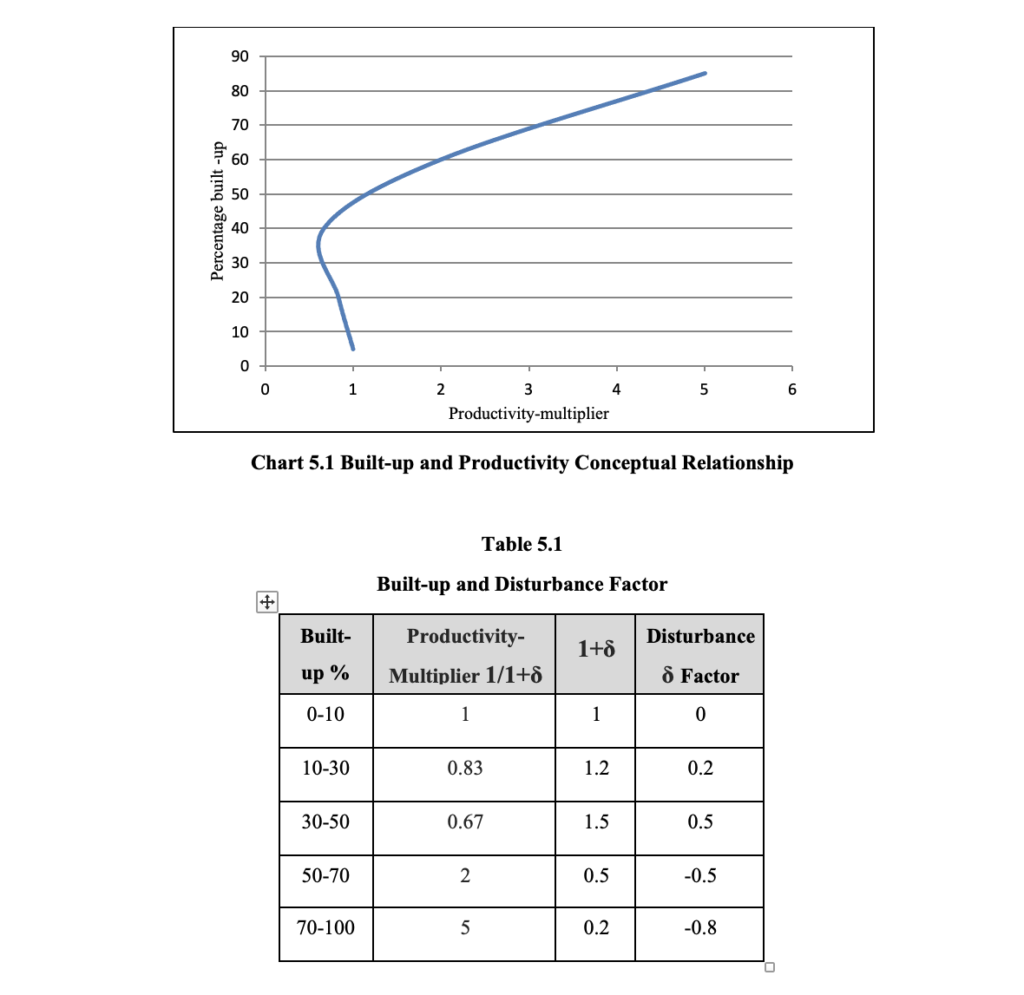
HAPPY CHEMICALS ARE INCULCATED IN EE-RICH URBAN AREAS AND CC-RICH ECOSYSTEMS
Environmental Efficiency and Carrying Capacity are two overarching umbrellas under which Mother Earth has to sustain and prosper. They have evolved from the published statistical dataset by United Nations Agencies and estimates published by the Global Footprint Network. Considering the Earth as a production unit based on the support systems available on Earth Human Development has been identified as the Output while Ecological Footprint has been identified as the input from a human-centric perspective. Thus Environmental Efficiency has been calculated based on an Output/Input Approach. Similarly Carrying Capacity of Earth has been calculated based on the Capacity/Consumption Approach. Those developed countries take a lower rank in terms of Environmental Efficiency considering their very high footprint trends. Similarly many countries are over-shooting beyond their biological capacity amounting to exploiting the resource backing of under-developed countries. There are imbalances both in the intra-generational and inter-generational sustainability status which are to be corrected by adopting corrective policies, programs and projects.
Thinking deeply about how to bring down the indicators, the research is taken down to the local level under the above two overarching umbrellas. At the local level, the creation of Sustainable Cities by the application of EE&CC indicators is quite promising which in turn takes the Nation and the World to a sustainable path. Hence earnest efforts have been made to convince the ordinary citizens of the importance of EE&CC theories in the creation of Sustainable Cities which is quite a win-win situation for the nature, people and the governments.
A hypothesis has been formulated as follows.‘ Happy chemicals are inculcated, in humans in environmentally-efficient urban areas and carry capacity-rich ecosystems, where all the flora, fauna and humans engaged in primary sector activities are part of the ecosystems. Also, it is hypothesised that bad chemicals are produced in an environment-inefficient urban areas and carrying capacity less ecosystems. The descriptive analysis is as below
The Thesis Dissertation titled ‘Environmentally-efficient Development Management System for Greater Kochi in Kerala State’ by this author at the Cochin University of Science and Technology identified four types of proxy indicators contributing to Environmental Efficiency and Carrying Capacity. They are as follows
Land Utility(u)
In environmentally-efficient locations, land utility(u) is very high. The land is a natural resource. Human development facilities are created on land in urban areas using natural resources, such as parks, playgrounds, stadiums, theatres, markets and transit stations. The land utility is determined by the sum of the number of people who use the facilities and who own such facilities. Government land is having the highest land utility due to the common ownership of land and due to the reason that a large number of people can access the facilities. Even apartments are having more land utility due to the common ownership of the land, and as facilities are used by many. In short more land utility can inculcate more human development and prosperity. If the city is divided into different grids in a GIS platform land utility of each grid can be calculated and the aggregated value of which determines the total land utility of the city which is an excellent Sustainable City Indicator.
Square of Accessibility(⍺ Square): Human Development Centres are under-utilised without the optimum number of users due to the reason that the facility is not easily accessible to many. Accessibility can be measured in time and cost and based on the availability of non-motorised transport facilities. In a city with less accessibility, man-hours are spent on travel to reach Human Development Facilities. If people are resorting to personalised travel and if there is traffic blockage human resource is idling with frustration inside the vehicles. They may also suffocate due to emissions emanating out of traffic blockages. In Environmental Efficiency calculations ⍺ Square is more appropriate as when accessibility increases human development increases and ecological footprint(emissions due to fossil fuel burning) reduces, the calculation for Environmental Efficiency being HD/EFp.
Per capita built-up area(β)
If the per capita built-up in the locality is less it contributes to more Environmental Efficiency due to the less land consumption. This is by attaining high residential density through high-rise development with less ground coverage. More open spaces in between buildings increase air circulation and thus reduce urban heat trap tendencies. Also if there is less ground coverage of buildings it ensures more greenery in between buildings resulting in urban forestry. If the paved spaces are ensured with artificial recharge more rainwater would be percolating into the ground. This reduces urban flooding during rainy seasons and drought and salinity intrusion in summer seasons.
Ecosystem disturbance factor(δ) and productivity multiplier value(1/1+δ).
The ecosystem disturbance factor (δ) is a measure that indicates the level of disruption caused by human habitations and related activities to the natural balance of an ecosystem. Ecosystems can refer to various types such as forests, agricultural lands, or aquatic environments. Within certain limits, ecosystems possess the capacity to accommodate human presence while still maintaining their functionality and balance. This means that up to a certain extent, humans can coexist with ecosystems sustainably, contributing to their well-being and preservation.
When the disturbance factor is within acceptable limits, human activities can even have positive contributions to ecosystems. For instance, including tribal populations as an integral part of ecosystems has been recognised as a beneficial approach. This post-COVID idea has gained traction in various forums and discussions, emphasising the importance of incorporating indigenous communities into ecosystem management.
But if human activities are occurring in an unplanned and haphazard way ecosystems will start declining. Rather than providing food and medicines ecosystems have regulatory, supportive and cultural functions as per the Millennium Ecosystem Assessment Report 2000. Disregarding the ecosystem’s integrity with short-term goals of the society is dangerous in the long run as they counter-produce.

On the other hand, if a certain meritorious area for urbanisation is disturbed in a bulk manner it induces robust development. It results in contribution due to economies of scale apart from human development opportunities. Ecosystem Disturbance turns to Productivity Multiplication in terms of flourishing secondary and tertiary sector activities resulting in good health and skill development.
A living example of productivity multiplier value is the Detailed Town Planning Schemes being implemented by the Development Authorities across the Nation and State. As an example, the DTP scheme implemented by the Greater Cochin Development Authority at Panampilly Nagar(Elamkulam West Town Planning Scheme), was mostly paddy land under the ownership of a few individuals and within 3 decades the area turned out to be the major economic and social development hub of the entire state of Kerala. The detailed Town Planning Schemes multiply the Environmental Efficiency due to increasing in land utility, multiplied function of accessibility and reduced per-capita built up consumption. Also due to bulk development Environmental Efficiency multiplies positively contributing to the people and governments.
Unfortunately, activities of these bulk development agencies have halted functioning in Kerala due to the lacunae in the legal framework after the new municipalities act 1994 and Town Planning Acts of 2016 enacted by the State of Kerala as per the provisions in the 74th constitutional amendment act of 1992 of Government of India. Halting of taking up DTP schemes in Kerala is a real loss to the Cities in the State due to the declining Environmental Efficiency scenario. Along with Environmental Efficiency(EE) Carrying Capacity(CC) also declines as EE&CC are like the two sides of a coin. Unplanned developments results in Urban Sprawl resulting in Environmentally-inefficient urban areas and Carrying Capacity less rural ecosystems.
Land Effectivity(ε)
One more indicator has been developed by the name Land Effectivity(ε). Land Effectivity refers to the rural agricultural ecosystems. If the extent of agricultural land is large and not subdivided it tends to be commonly owned by single/multiple persons. Their agricultural productivity may be very high due to bulk farming practices reinforced with scientific methods. On the other hand, the agricultural land is subdivided into different pieces under different ownerships resulting in unviable agriculture which often results in losses to the farmer. This ultimately has reflections on Environmental Efficiency as farm products are ultimately meant for the people.
ABOUT HAPPY CHEMICALS
Four types of happy chemicals generated by the human body are listed namely Dopamine, Oxytocin, Endorphins and Serotonin. Going through the literature on happy hormones in our human body it is seen that all four are interrelated and create multiplying effects on the human body just like the above five proxy indicators of Environmental Efficiency. In Environmentally-efficient localities, happy hormones are produced in the human body due to the following reasons,
More common land ownership leads to more common facilities like cycle tracks, footpaths, parks and playgrounds which helps to harness Endorphins and Serotonin in our body which is useful to overcome stress and discomfort. This results in a balanced mood and feeling of wellness. Once people are well they will spread wellness in our family and community in the form of kindness to fellow beings and as well as to the nature around us. Once we are good to our nature, nature also will be good to us. Once we love nature including all kith & kin around us lot of oxytocin is produced in our body. Also when nutrient-rich food from Carrying Capacity regions enables us with plenty of Serotonin in our body which turns to Melatonin which induces good sleep. Melatonin again inculcates more kindness in ourselves and the people around us. The summary is that there will be plenty of happiness and prosperity as Environment and Development are going hand-in-hand.
I came across one article under the heading ‘Downside of living in High-Rise Buildings’ and the author tends to reprimand the high-rise trends in Cities due to the reasons such as high-rise trends reduce inter-personal contacts, separate people from streets, induce gentrification and inequality, create high carbon footprint and deprive the residents of walking and cycling. The above points are feeble as they are generalised opinions expressed by 20th century quotes. Our Urban Designers, Architects and Habitat Engineers are well informed to deal with such infirmities of high-rise trends with innovative designs embedded with Technological applications of the 21st century. It should be achieved on a checking and balancing method using Environmental Efficiency and Carrying Capacity Indicators. This is the challenge which Nations have to overcome as we are living in an ecologically over-shooting Earth where our consumption is 75% in excess of the regenerative capacity of Earth.
NEED FOR A DEDICATED INSTITUTIONAL SETUP
A dedicated institution is required at the national, state and city level to check and balance Environmental Efficiency and Carrying Capacity. Policy revisiting and evolving of corrective programmes and projects are the need of the time. For India, there is an even chance of great success as the average Indian is consuming only 0.7 of the earth while the world average is 2.6 Earths and the average American is consuming 4.9 Earths as per the Footprint calculations published by York University.
References:–
1.Mathew.M, Thesis dissertation(2009), Environmentally-efficient Development Management System for Greater Kochi in Kerala State, Cochin University of Science and Technology, Kerala, India. http://dyuthi.cusat.ac.in/purl/2679
2.National Ecological Footprint and Biocapacity Accounts 2023 https://footprint.info.yorku.ca/data/
3.D. Balasubramanyan, 2023, Downside of living in high-rise buildings, Article published in The Hindu News Paper on 9th July 2023https://www.thehindu.com › Sci-Tech › Science
4.Mathew.M, Lock down tips https://medium.com/@environmentalefficiency/lockdown-tips-278b03f1ae78
5.Centre for Environmental Efficiency www.centreforenvironmentalefficiency.org
(This article is originally published in the medium page of the Centre for Environmental Efficiency as per the link below










